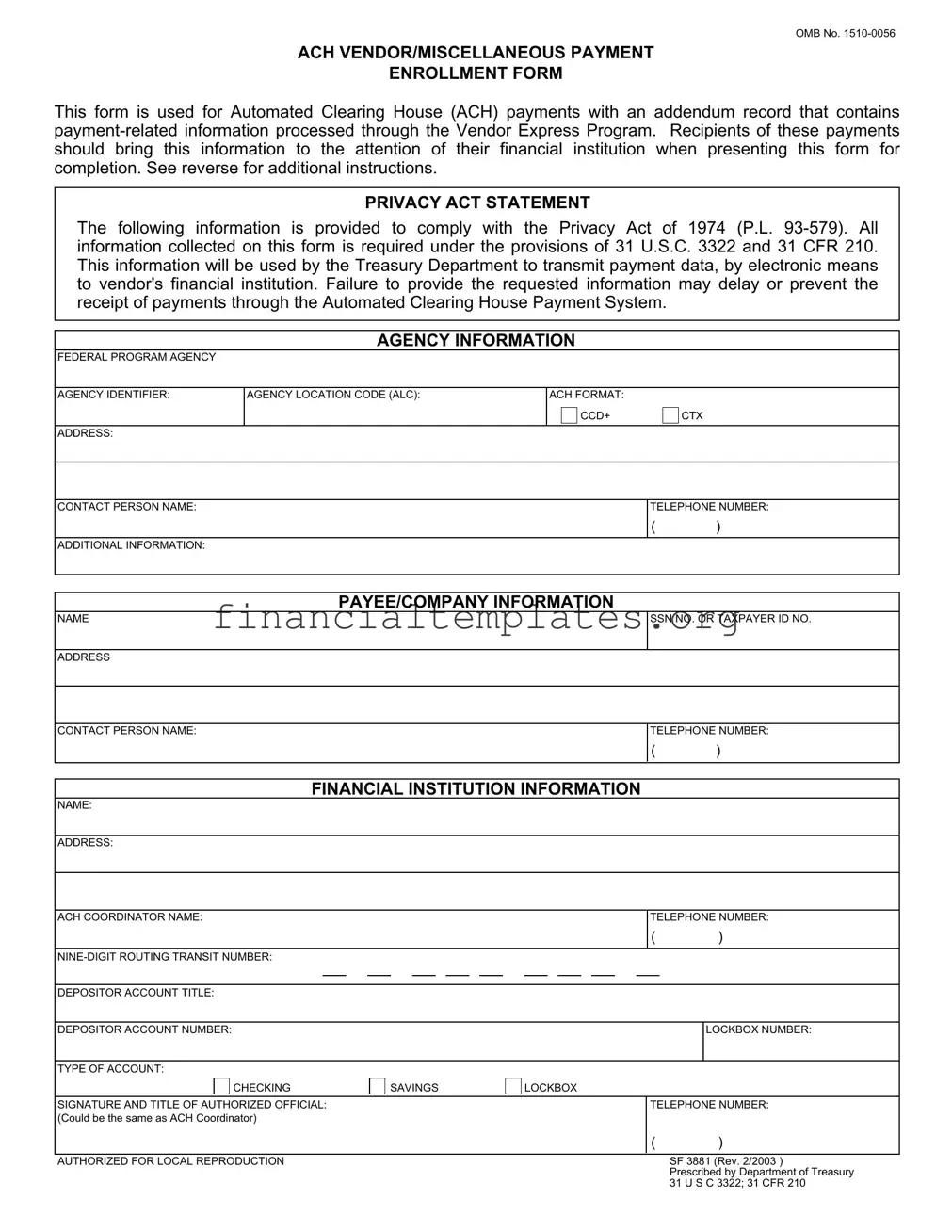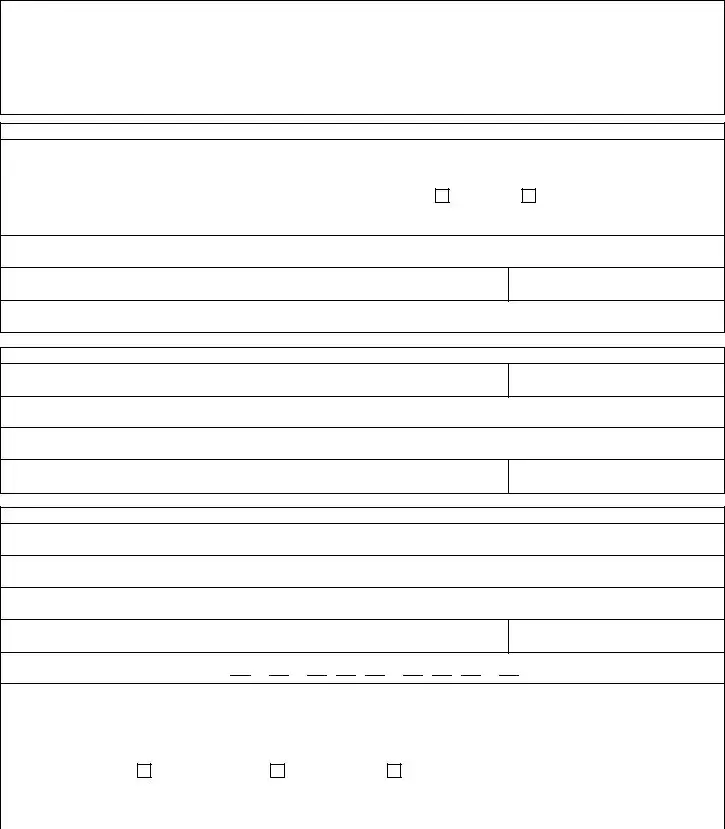The W-9 Form (Request for Taxpayer Identification Number and Certification) shares similarities with the ACH Vendor Payment form. Both require the supplier or individual to provide their Taxpayer Identification Number (TIN) or Social Security Number (SSN), ensuring the correct linkage of financial transactions and tax records. Each form serves to facilitate smooth financial transactions while adhering to federal regulations, minimizing tax reporting issues, and ensuring accurate payment processing and reporting.
The Direct Deposit Enrollment Form, often used by employers for setting up payroll deposits, closely aligns with the ACH Vendor Payment form. It captures essential information such as bank routing and account numbers, similar to the financial institution details required on the ACH form. This facilitates the electronic transfer of funds, ensuring employees or vendors receive payments directly in their chosen bank account efficiently and securely.
A Vendor Application Form, although more comprehensive in scope, shares the purpose of gathering key details about a vendor, akin to the ACH Vendor Payment form. It includes identifying information such as business name and taxpayer or social security numbers, and may also ask for banking details for payment purposes. Both forms are used to streamline the payment process between businesses and their vendors or contractors.
The Electronic Funds Transfer (EFT) Authorization Form mirrors the ACH Vendor/Miscellaneous Payment Enrollment Form in its purpose to authorize electronic payments. The EFT form collects banking information, including routing and account numbers, facilitating a direct, electronic transfer of funds. This similarity underscores the move towards more efficient, digital payment processes across different contexts.
The IRS Form 8300 (Report of Cash Payments Over $10,000 Received in a Trade or Business) shares a commonality with the ACH Vendor Payment form through its focus on financial transactions and compliance. While Form 8300 is specific to large cash transactions and their reporting, both forms gather taxpayer identification to comply with federal regulations, highlighting the importance of transparency in financial operations.
The Purchase Order Form, used by businesses to authorize the purchase of goods or services, relates indirectly to the ACH Vendor Payment form. While it does not collect bank information, it initiates the transaction process that culminates in payment, potentially through ACH, to the vendor. The capturing of detailed information about the transaction lays the groundwork for a smooth payment process.
The Business Credit Application Form is another document that, while broader in scope, includes elements similar to those in the ACH Vendor Payment form. It may request bank and trade references along with financial information to evaluate creditworthiness. Part of the information gathered can include banking details for future transactions, underscoring the interconnectedness of credit and payment processes.
The Bank Account Verification Letter serves a purpose closely aligned with the information verification aspect of the ACH Vendor Payment form. By confirming the account holder's details and the account status, it ensures that electronic transfers, like those facilitated through the ACH system, are made accurately to verified accounts, thereby minimizing the risk of errors or fraud.
The Invoice Form, although typically a request for payment rather than a payment authorization, intersects with the ACH Vendor Payment form through its role in the payment process. Invoices detail what services or products have been provided, culminating in the need for payment that might be processed via ACH, thus linking the provision of services with the mechanics of payment.

